Join P&O Cruises Port Presenter Sam Whiteside as he shares the third instalment of his world cruise diary, written on board Arcadia.
Tuesday 13th February 2018 – Pago Pago, American Samoa
In the 4 days sailing from Hawaii towards American Samoa, Cyclone Gita had formed in the South Pacific and had developed into a Category 2 cyclone, crossing over Samoa and American Samoa during the night of the 10th and into the 11th of February. Communication with our local operator could only be conducted via sporadic emails from her mobile phone, as her power was out as it was to most of the island. As is the case with any such incident there was a possibility that we may not make it to American Samoa. This would have been a real shame, as this was a place many people (including myself) were looking forward to visiting, as it is off the beaten track and an unusual place to visit. Luck was on our side though as the conditions improved and Gita moved away from American Samoa. The weather improved significantly enough for the port of Pago Pago to be open for our arrival.
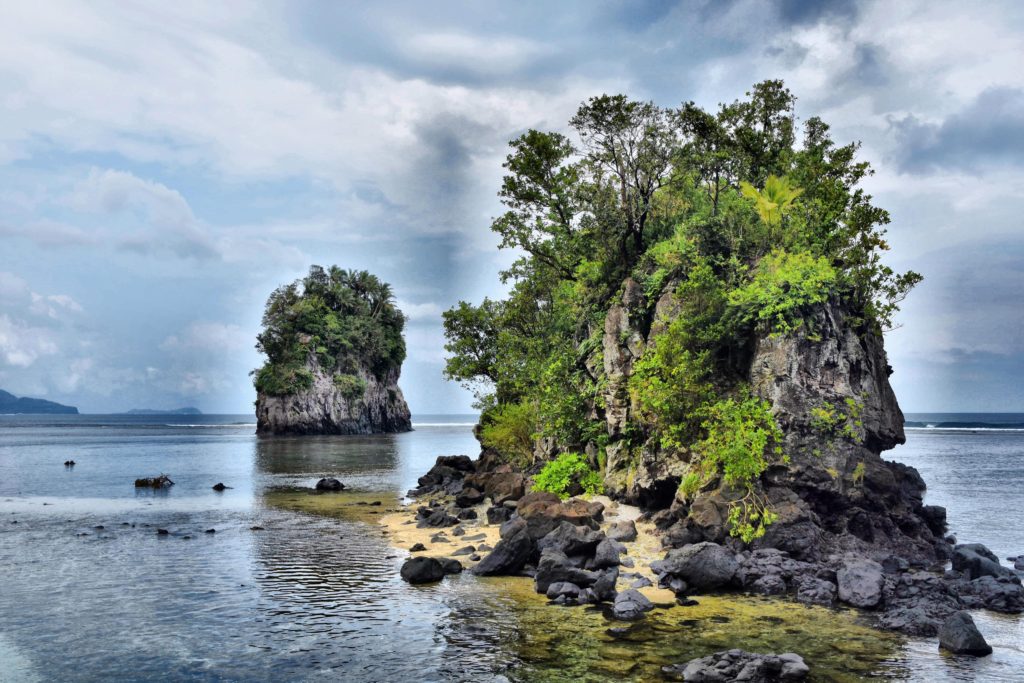
The local people were very happy to see us and guests on board were so gracious in coming forward and offering donations of money and other items to islanders, however locals insisted on welcoming us as tourists, wanting to show off their island. We informed guests that they may see signs of damage from Gita and that some of the tours may be affected, but this did not stop people from heading off on their basic island buses for trips all over the island. Standards in American Samoa are basic in most cases and transportation for tours is conducted on buses that have no windows, no A/C, no PA system, no cushioned seats, but they are full of character and led by fantastic local guides.
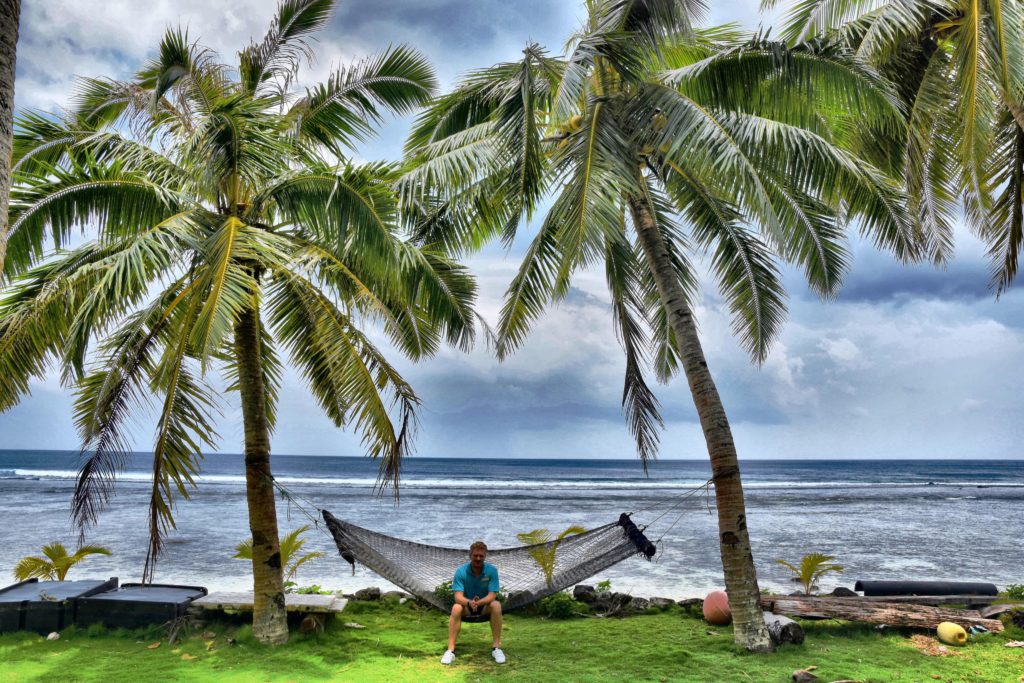
The tours team ventured out on a tour around the island with the local Samoan tour operator and she told us all about her community, showing us some of the most beautiful scenery I have ever seen on a tropical island. I am used to visiting the Caribbean and American Samoa for me surpassed most of the Caribbean islands because of its raw natural beauty, only comparable I would say, with Dominica for the black rock beaches and palm fringed bays that line the coast.
We stopped for several photo opportunities along the eastern side of the island, taking in the isolation and tranquility of an island barely touched by commercialization. We did see remnants of Cylcone Gita, where many trees had been uprooted and blown over and where the corrugated roofs on many houses had been torn off. But this did not detract from the beauty of the island, with all of the natural colours of the flowers and the white sand and turquoise seas.
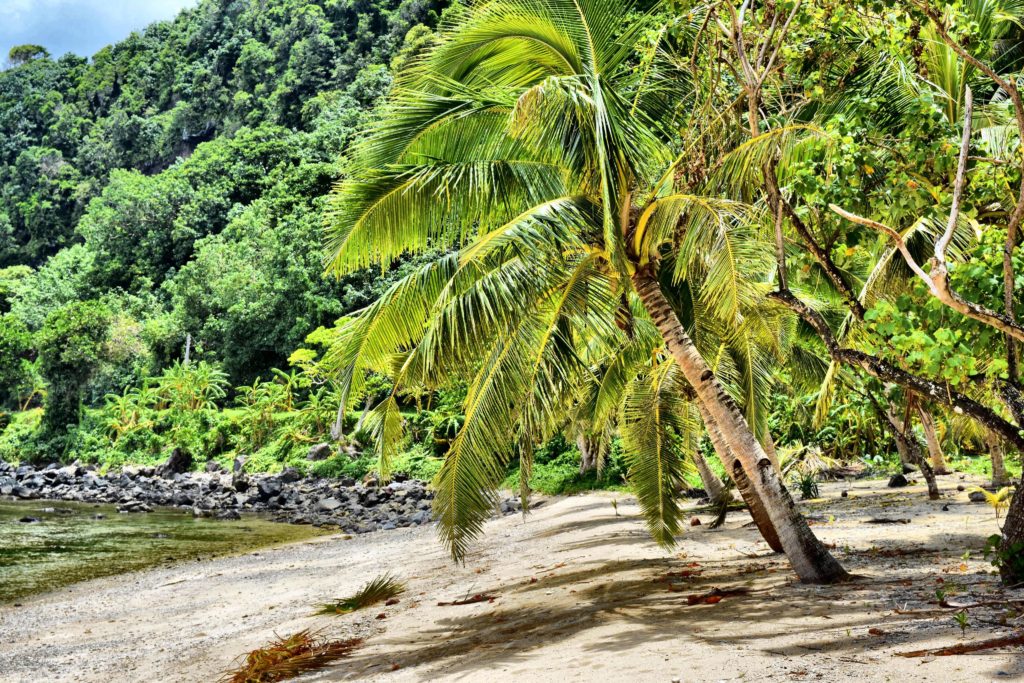
Walking around Pago Pago and Fagatogo (pronounced Pango Pango and Fangatongo respectively due to the Samoan language pronouncing ‘g’ as ‘ng’), the main towns on American Samoa and where the cruise ships dock, it was nice to see the local museum, the Jean P. Haydon Museum, open after the cyclone. A free museum with donations warmly accepted, you can see various hand carved canoes used by Samoans in their lives as fishermen and explorers of the South Pacific, as well as a unique exhibit showcasing moon rocks and a miniature Samoan flag that was taken to the moon as part of four Apollo missions from 1969 to 1971. It was gifted to the territory by President Richard Nixon.
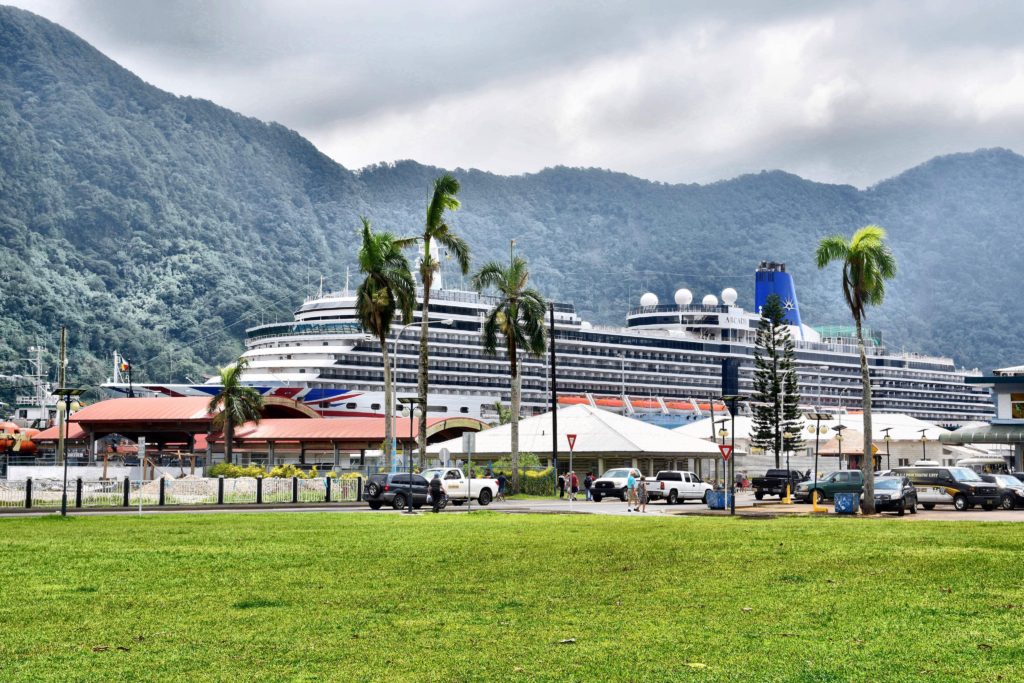
The National Park of American Samoa Visitor Centre was worth the visit too, as I learnt about the various elements of the only National Park of America in the Southern Hemisphere and how important it is to the local ecology. A park ranger was on hand to answer any questions and you could also stamp your passport, or a little piece of paper if you did not have that, with an American Samoa stamp to say you had visited. They can provide you with maps of the various trails around the island, with the World War II Heritage Trail to Blunt Point being one of the easiest ones to access from the ship.
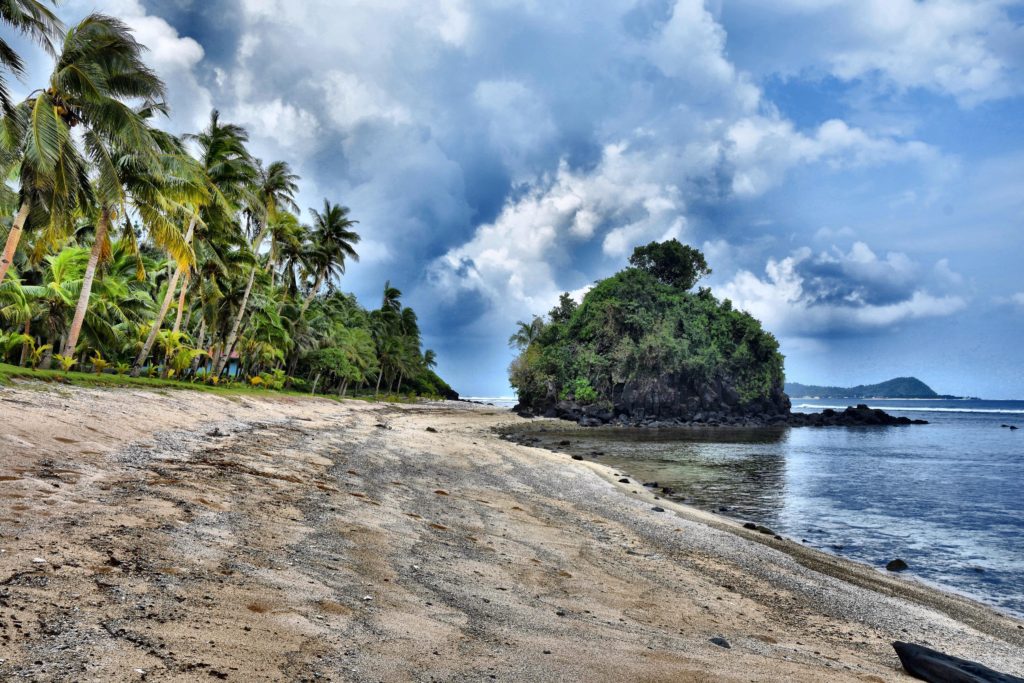
Other sites of interest in town were the Co-Cathedral of St. John the Worker completed in 1959, and the Sadie Thompson Inn, made famous as the setting in which author W. Somerset Maugham staged his most famous short story ‘Rain.’ Maugham stayed at the Inn for six weeks from December 1916 to January 1917, and published the story in 1921, which depicted a psychological battle of wits between a wayward, on-the-run prostitute, Sadie Thompson, and a conservative, self-righteous missionary. No conclusive evidence is available, however it is suggested that Maugham was staying at the Inn whilst a real life Sadie Thompson was on the run from the red light district of Honolulu. The Inn is still a small hotel and has a nice bar and terrace for those who want to get a drink or some food. There is also a sister property called Sadie’s by the Sea, which has its own private beach and pool which can be used for the day for only $5USD and a fantastic restaurant called The Goat Island Café, serving up local dishes and typical American items in very sizeable portions at reasonable cost. So much packed into one day, I was so thankful for the opportunity to visit, considering at one point it had not looked so likely.
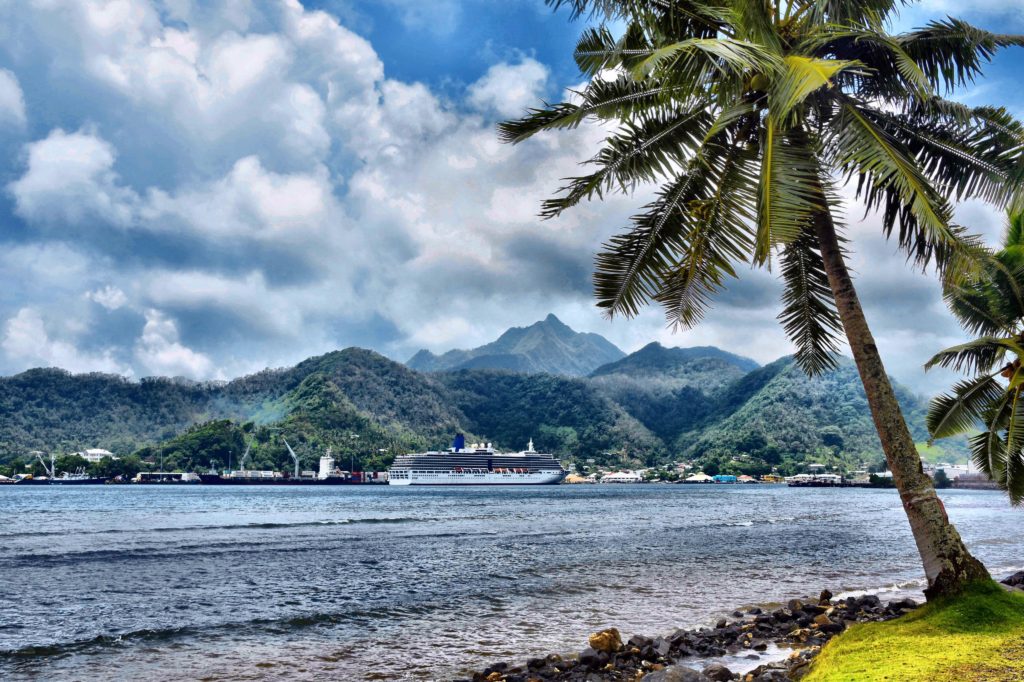
Friday 16th February 2018 – Nuku’alofa, Tonga
American Samoa may have been affected by Cyclone Gita but it got off lightly in comparison to Tonga. After leaving the Samoan region Gita swung around and headed west, rampaging across Tonga with a direct hit on the main island of Tongatapu where our next port and the capital of Nuku’alofa is based. Gita hit as a Category 4/5 on the 12th February, with winds in excess of 125 mph and storm surges expected in the capital and low lying coastal areas. Due to the severity of the cyclone, the most intense tropical cyclone to impact Tonga since records began, the decision was taken to abort the call to Tonga and continue onward to our next port, Auckland. This was very sad and disappointing as another unique and less visited destination and one that is harder to visit, but understandable given the conditions. Gita would still hover ominously and we had not seen the last of her yet.
Monday 19th February 2018 – Auckland, New Zealand
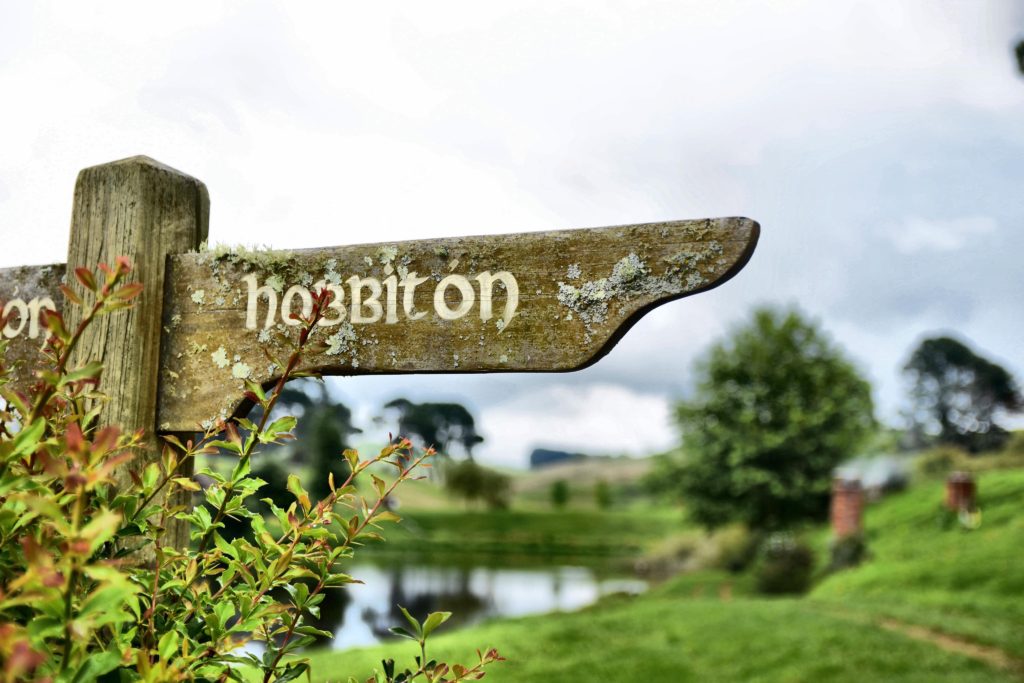
After arriving to Auckland late on Sunday night and having a little bit of time out to stretch the legs (and grab a drink in the local Irish pub), Monday was all about Hobbiton. Now in my teens the big movie event prior to the current trend of superhero movies was The Lord of the Ring Trilogy, filmed extensively across New Zealand by Kiwi director Peter Jackson. In scouting locations for The Shire and Hobbiton in 1998, an aerial search sighted Alexander Farm in the Waikato Region near to Matamata. This 1,250 acre sheep farm was devoid of any sign of human existence; no roads, no buildings, no electricity pylons, just rolling hills and fields as far as the eye could see. They had found The Shire as described by JRR Tolkien.
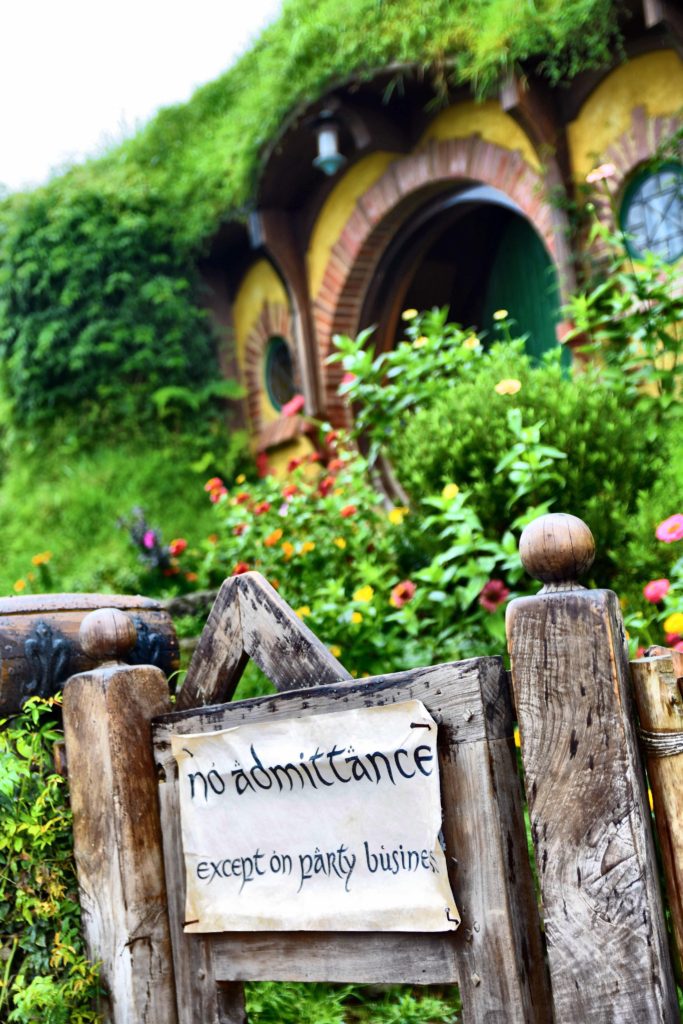
In March 1999 the New Zealand Army were drafted in to help convert the farm and its hills into Jackson’s vision with 39 temporary Hobbit Holes scattered around the 12 acre site. Filming began in December 1999 and was concluded in 3 months. After filming these Hobbit Holes were reduced to only 17 bare facades and guided tours started in 2002. Hobbiton was reused from 2009 as Jackson and his crew returned to film The Hobbit Trilogy, but this time they left the set behind, now with 44 Hobbit Holes, all unique in their design along with the Green Dragon Pub, so visitors to enjoy a beverage of cider or ale. This was a place that was high on my bucket list for this world cruise and so I was more than excited to escort the ships tour, accompanied by Grace.
The drive from Auckland to Hobbiton is around 2 ½ to 3 hours depending on traffic and whether you stop at the services for a comfort break. The drive down is mostly on the highway, but the scenery is very pretty, with rolling hills and valleys as you move past the stud farms and onto the agricultural plains, before meandering across the rolling Waikato Ranges into Hobbiton. It is hidden from the main road but it is sought out by many hundreds of tourists.
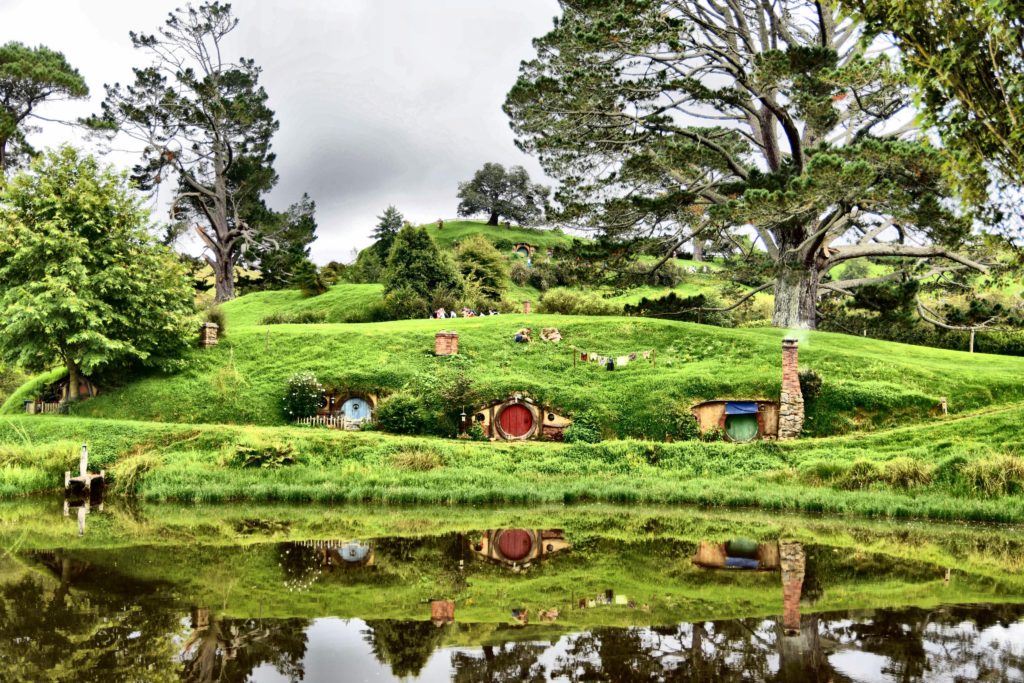
Once we arrived we were taken down onto the Alexander farm by our local guide, many of whom are travellers who take up the job in the summer to supplement their travel. Our guide Lucy was actually originally from Cornwall, but was taking a sabbatical from work to travel Australia and New Zealand. We first stopped for lunch, which was well received and definitely needed. It was served in a tent, exactly like the ones seen used for Bilbo’s birthday in The Fellowship of the Ring, with large wooden tables set with simple mugs and flagons of water. Lunch was a buffet comprising of meatballs, lamb cuts, chicken stew, fish cakes, pesto pasta, gorgeously prepared root vegetables with parsley and a selection of fresh breads. Dessert was various little cakes accompanied by tea and coffee.
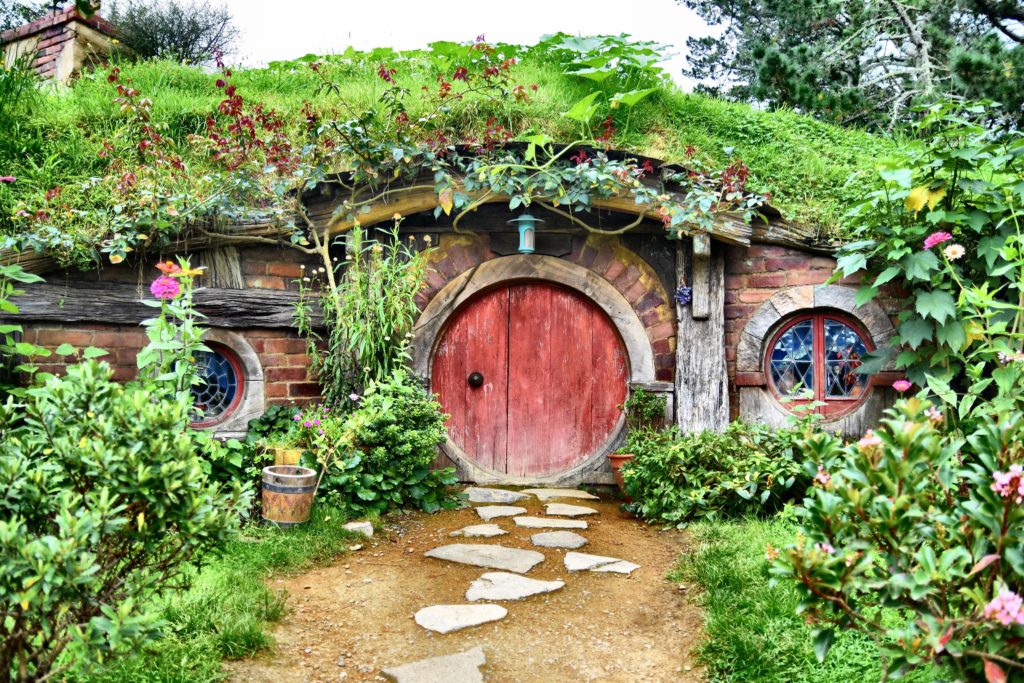
With our appetites sated, it was time to burn off the calories with the walk around the set. Up until this point, we had kept ourselves away from peeking at Hobbiton. But as we walked down from the tent, we stood next to the Green Dragon Pub with a view across the lake to the main hill where Bag End sat atop it, with all manner of coloured doors to the Hobbit Holes dotting the hillside. It was a magical sight and the fact that it was a grey day with rain in the air did not detract from the scene. Following the guide on the walking tour, she explained various aspects of the site and how the gardens are still attended to by workers and props are changed to make it feel like a lived in village.
Each Hobbit Hole had a distinct character and was set up to have various items outside indicating the occupation of the fictional Hobbit owner; smith, gardener, fisherman, town drunk, all had a clue as to who lived there. It started to rain quite heavily as we made our way up the hill towards Bag End, but by the time with arrived at the home of Bilbo and Frodo Baggins the rain had stopped and it had started to brighten up a bit, perfect for taking the best photographs of the famous green door where once Gandalf the Grey passed through to encourage both Bagginses to head off on an adventure. Before leaving to head back to Auckland there was enough time for a quick drink in the Green Dragon, complimentary on the tour, and both Grace and I sampled the home made ginger beer and sat next to the fireplace to dry out a bit and savour the moment as fans of the films and books.
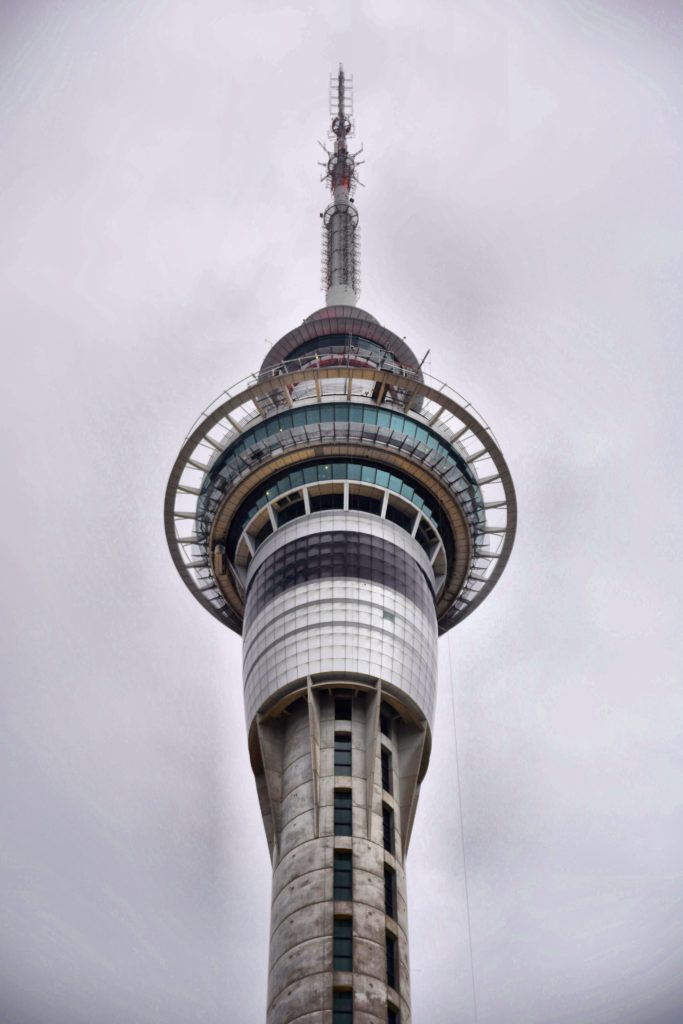
Once we got back to Auckland 2 ½ hours later, I still had time to take a wander about, as we did not leave that evening until 10PM and we arrived back at 6:30PM. I had been told that Auckland as a small city did not require loads of time, hence why I was keen to go to Hobbiton on my first visit so as not to be disappointed. I was glad to still have the chance to do the one thing I had been set on doing in Auckland if I could and that was to go up the Sky Tower, the tallest freestanding structure in the Southern Hemisphere. As it is open in the southern summer until 10:30PM, I had a great opportunity to head up in the day and see the lights of the city come on below me.
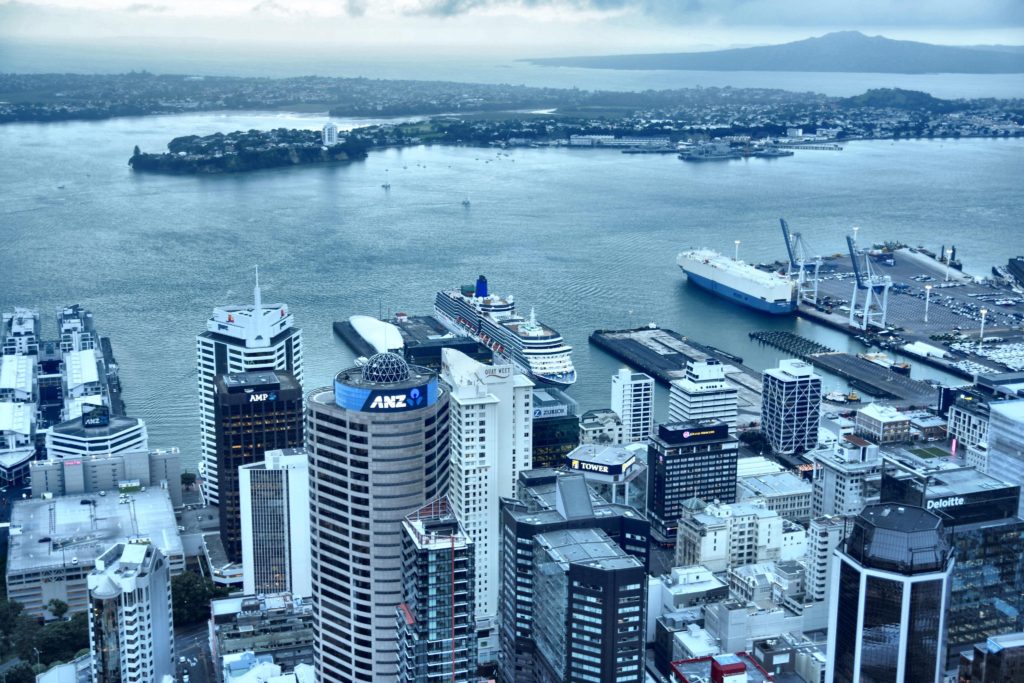
At 328 metres (1,076 ft) tall, the tower is the 23rd tallest tower in the world and an iconic landmark in Auckland’s skyline. For the price of only $27NZ, I could visit both observation decks. The main observation deck at 186 m (610 ft) has 38 mm (1.5 in) thick glass sections of flooring giving a view straight to the ground, whilst the top observation deck labeled “Skydeck” sits just below the main antenna at 220 m (720 ft). It was a grey evening so the views to the horizon were dotted with large cloud formations, but I still got some great shots of the city skyline below, including the Auckland City Hall and Arcadia at her berth at Queen’s Wharf. I still had time after heading back down to ground level to browse some of the shops on Queen Street and get a magnet for my 89th country visited.
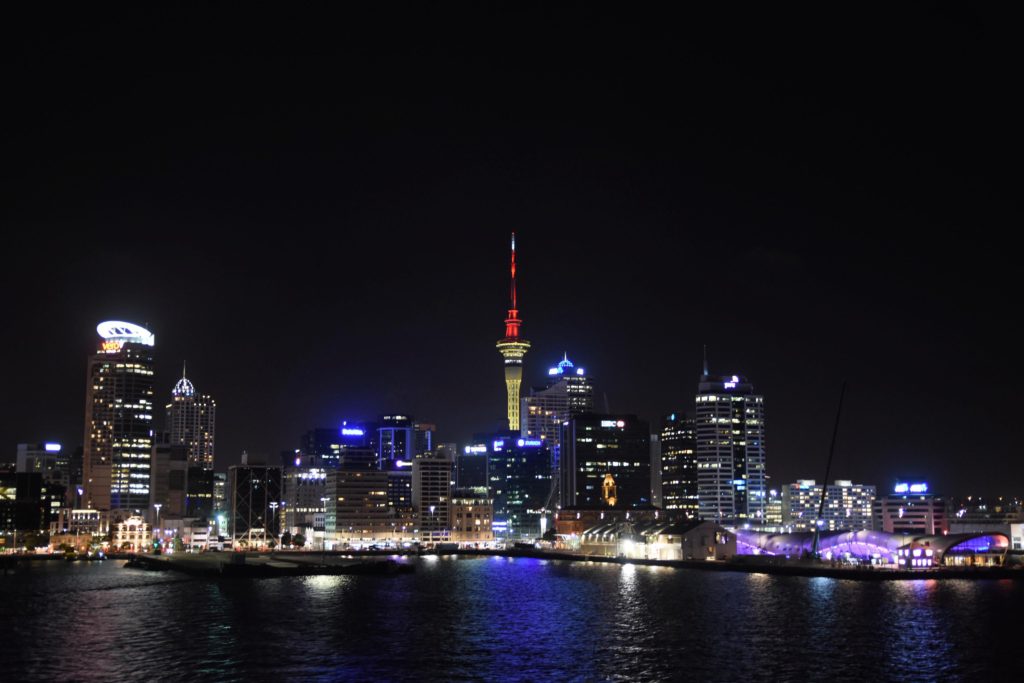
Tuesday 20th February 2018 – Bay of Islands, New Zealand
Bay of Islands is a key location in New Zealand with regards to the political foundation of the country, as it was here on 6th February 1840 that the Treaty of Waitangi was signed between members of the Maori community and representatives of the British Crown. The Treaty established a British Governor of New Zealand and gave Queen Victoria’s government the sole right to purchase land, to protect the country from being colonised by the French. In return for this the treaty recognised Māori ownership of their lands, forests, and other properties, and gave Māori the rights of British subjects. However it is a somewhat controversial document as the English and Maori language versions differ slightly, so there is no consensus as to what was actually agreed upon.
All this was debated and signed in the Bay of Islands at what is now called the Waitangi Treaty Grounds, just a short walk from where cruise ship tenders bring ashore visitors. As this was due to be a tender port, any dodgy weather would make it very difficult. Low and behold Cyclone Gita reared her ugly head again. Now not as serious as she was when she made landfall in Tonga over a week prior to our arrival at the Bay of Islands, she had now swung around in the Tasman Sea and her remnants were heading into the South Island, with her outer swirls churning as far north as our location. This meant that on arrival into the Bay of Islands the pilot advised that the swell conditions and wind gusts were too great and it was with a heavy heart that the call was aborted, albeit for the right reasons. It was a shame, as I was due to meet a friend who lives in nearby Whangerai and who I had not seen in a couple of years, but it just means I will have to make the effort to get back to New Zealand, as my trip to Hobbiton and Auckland had definitely given me a glimpse at why New Zealand is a hot spot destination for backpackers and travellers looking for a bit of adventure.
Friday 23rd February 2018 – Sydney, Australia
I was primed and ready for all Sydney had to offer as so many people had told me about the spectacular sail into Sydney Harbour on a world cruise. Our visit to Sydney marked the end of Sector 2 and it was the next big port after San Francisco. My day began by getting up at 5AM to be up on deck for the sail in through the Sydney Heads, leading all the way down Sydney Harbour, docking at the Overseas Passenger Terminal at Circular Quay. It was dark as we approached the city, with sunrise at 6:37AM, but as we neared the berth where we due to dock at 6:30AM, the Opera House was lit up slightly and the sun started to lighten the sky to bring in the dawn. It was just fantastic to see and I was so excited to get off later and walk around taking as many photos as I could of all the icons here.
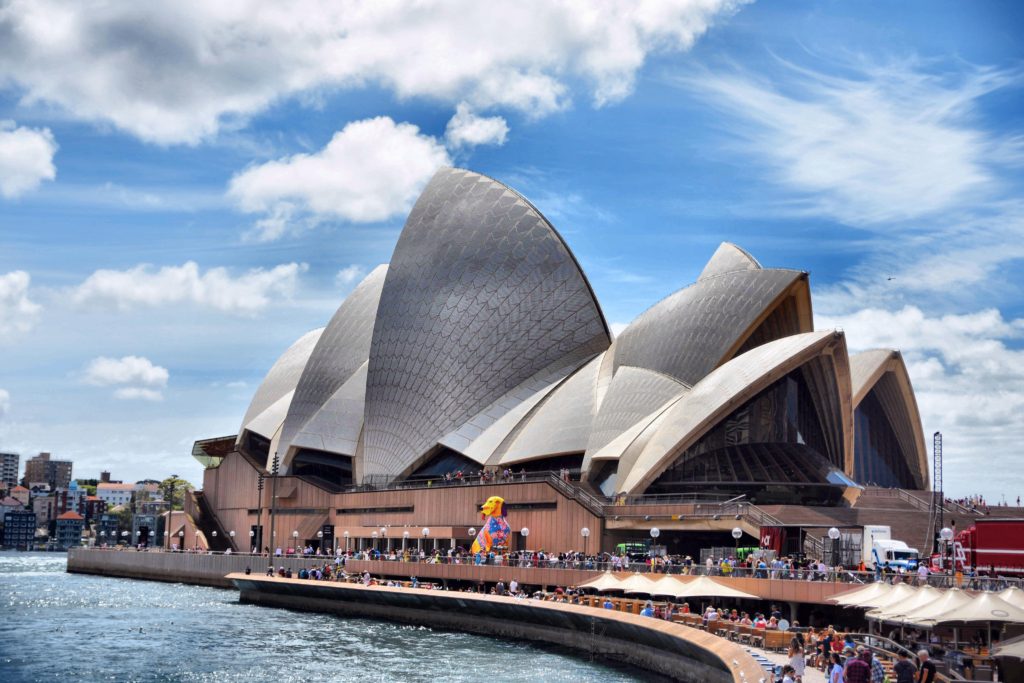
After dispatching all the tours it was about 10:30AM when I set off with Grace to explore a city neither of us had been to. She had a friend visiting from Melbourne and so the three of us headed first to The Rocks, where Sydney was born, and had brunch at a little café with an outside terrace, basking in the ambient morning heat upwards of 28 degrees Celsius. After brunch, we ventured into the Museum of Contemporary Art (MCA), housed next to the cruise terminal, which is free to enter and has a great viewing deck with a bar and restaurant on the top floor. This was a great location for pictures of Arcadia with The Rocks and the Sydney Harbour Bridge as the backdrop (sadly, our home away from home was blocking the view of the Opera House for all to see).
From here we headed around Circular Quay to the Opera House, resplendent in the sunshine with its triangular shells shimmering. I took several shots of the Opera House as it looked great from so many angles, especially as we moved into the Botanical Gardens and the Harbour Bridge started to come into frame behind. The Botanical Gardens themselves are lovely to walk through, totally free to enter, the oldest scientific institution in Australia and one of the most important historic botanical institutions in the world. They were opened in 1816.
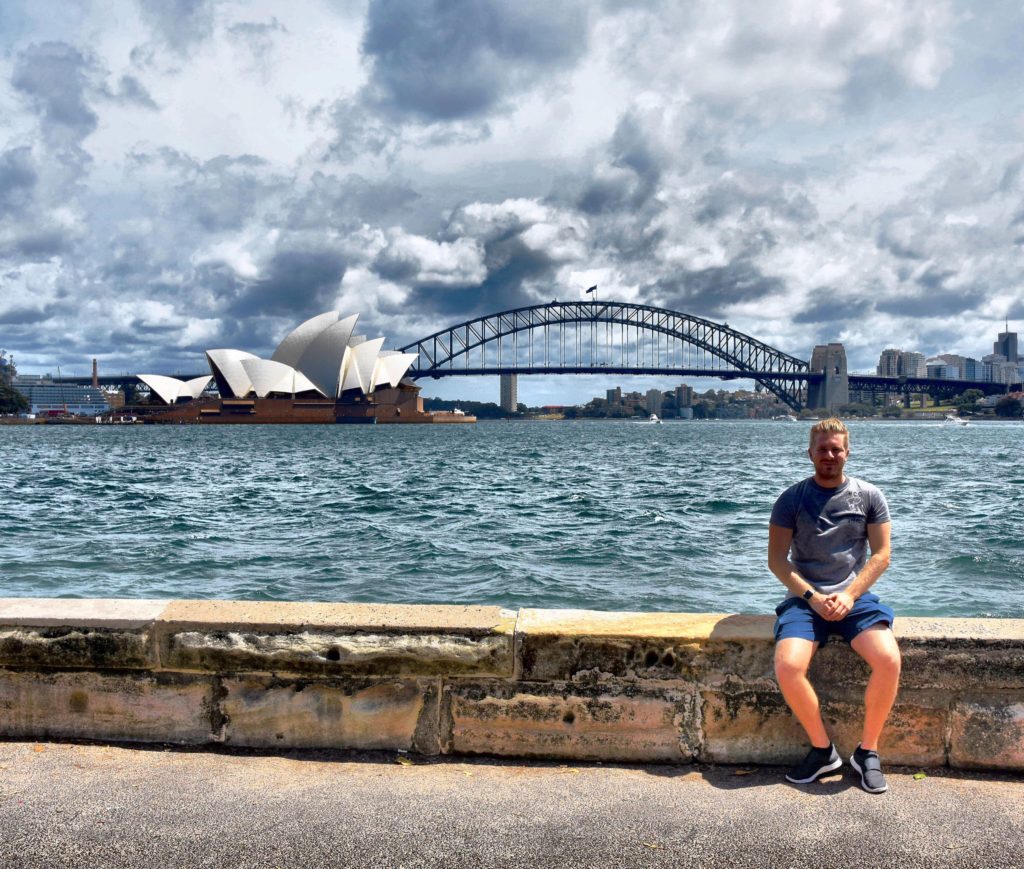
We headed round Farm Cove, famous for being the location on 3rd February 1954 where Her Majesty Queen Elizabeth II, Queen of Australia, landed at the beginning of her first visit to Australia, the first occasion on which a reigning monarch had set foot on Australian soil. We headed to a nice vantage point to take shots of the harbour and the Opera House and Harbour Bridge together and also to see Mrs Macquarie’s Chair (also known as Lady Macquarie’s Chair), an exposed sandstone rock cut into the shape of a bench, on a peninsula in Sydney Harbour, hand carved by convicts from sandstone in 1810 for Governor Lachlan Macquarie’s wife Elizabeth.
We continued to walk through the Botanic Gardens, through The Domain which adjoins them, passing by the Gallery of New South Wales, before visiting St. Mary’s Cathedral, which has the greatest length of any church in Australia and is located next to Hyde Park. This was a short distance from the city centre and the Pitt Street Mall, the busiest shopping street in Australia, anchored by the Sydney Tower and Westfield Shopping Mall. After a small bit of retail therapy, plus a hot chocolate from Bon Bon which I was reliably informed is the best hot chocolate I would ever have (it did not disappoint), we headed down to Darling Harbour for a spot of lunch at a harbour side restaurant.
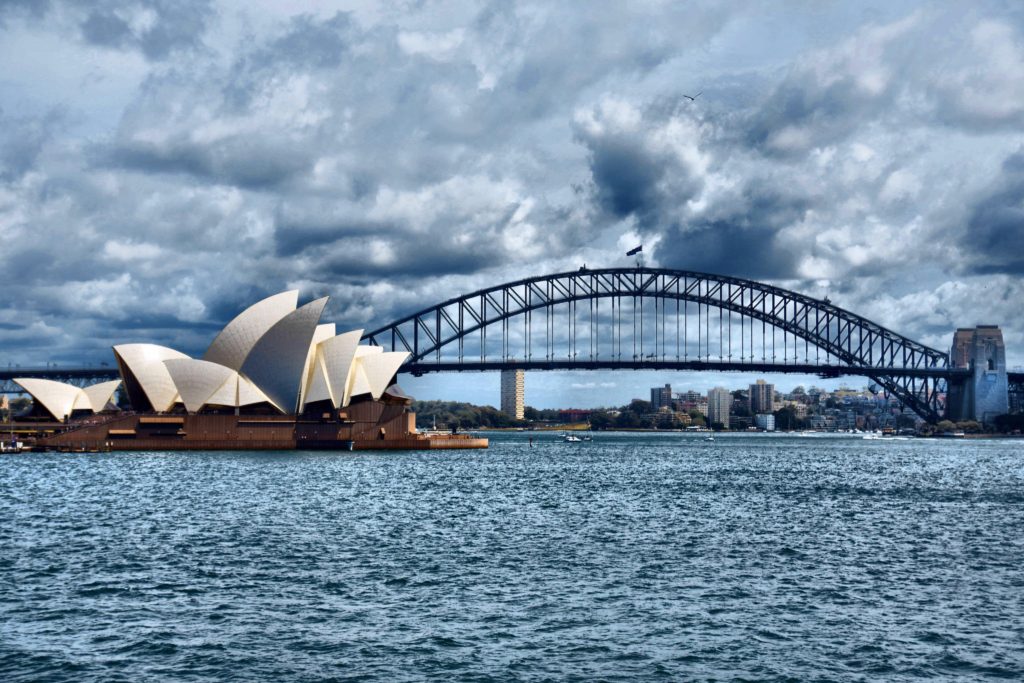
After our calamari and chips, which were very nice as a little afternoon snack, we walked back to the ship for the embarkation drills and to refresh for a night at the cinema, just to feel a bit normal. It was nice walking through the city at night, seeing the hustle and bustle of people finishing for the week and ready to enjoy their weekend. After walking almost 15 miles, I was ready for bed and after picking up a takeaway pizza and heading back to the ship, I got myself prepared for the second day in Australia and a trip to explore the nearby Blue Mountains.
Saturday 24th February 2018 – Sydney, Australia
As is usually the case in Sydney, if another ship needs to use the Overseas Passenger Terminal, you are required to move to an anchorage position and tender into the Man of War Steps next to the Opera House. As the majestic Queen Mary 2 was in on our second day to conduct her Sydney turnaround, we did need to move in the early hours at 4:30AM and take our tenders ashore. For me this actually turned out to be a highlight as I was on one of the first shore tenders out at around 7:30AM and got to sit at the front of the tender with the window open, offering unrivalled views of the Opera House which by this time had the perfect light reflecting off it for me to capture some great photographs.
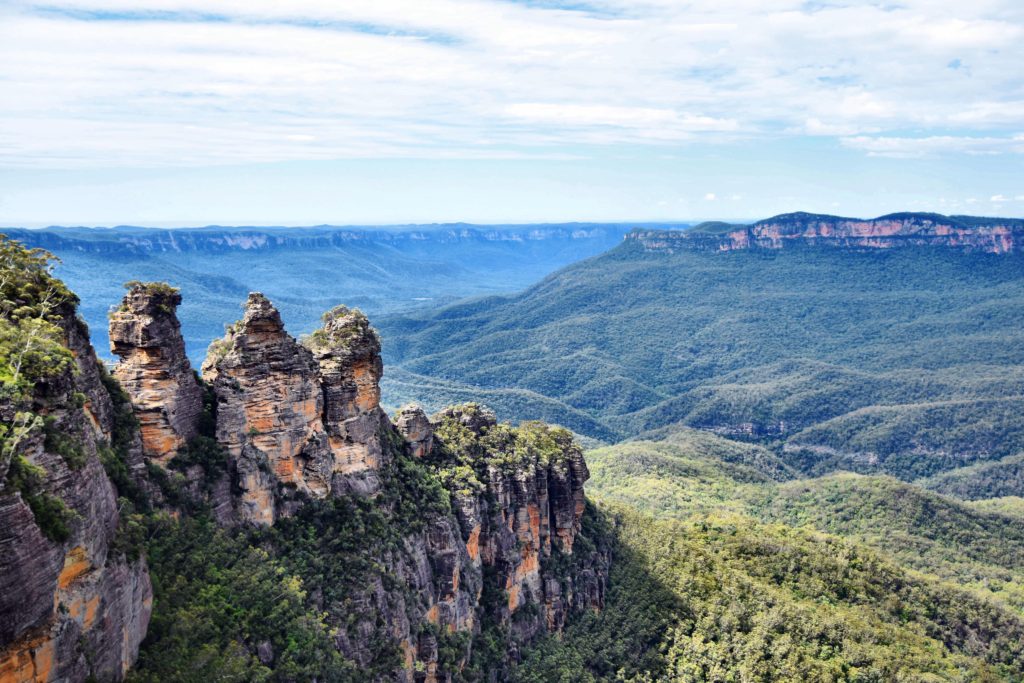
Once ashore, we gathered our groups and set off for the 2-hour drive west of Sydney to the Blue Mountains and the town of Katoomba. The drive out for the first hour and a bit was just through suburbs and on the highway, but during the last 45 minutes the scenery changed to little frontier towns, with a sort of Wild West feel, and slowly started to climb up the hills that form part of the Great Dividing Range that runs down the entire eastern side of Australia.
We arrived at Katoomba and stopped first at Echo Point to capture images of the Three Sisters rock formation and the Jamison Valley, where you could really see the blue tinge in the air that lends its name to the area (the blue tinge comes from light refracting off the mie of the eucalyptus trees in abundance on the mountains). This was a brief stop of 20 minutes before we headed to a local hotel for lunch, which was a simple but leisurely affair, offering lovely views of the valley beyond. After an hour spent for lunch, we headed over to Scenic World where the main attractions were the Scenic Railway ride down into the valley itself and then the walk around the valley floor to take the Scenic Cableway back up. The Scenic Railway is the steepest cable-driven funicular railway in the world, the steepest incline of 52 degrees contained within a total incline distance of 310 metres (1,020 ft), and the Scenic Cableway is the largest cable car setup in the world, able to transport 84 people at a time 510 metres (1,673 ft) down into the Jamison Valley.
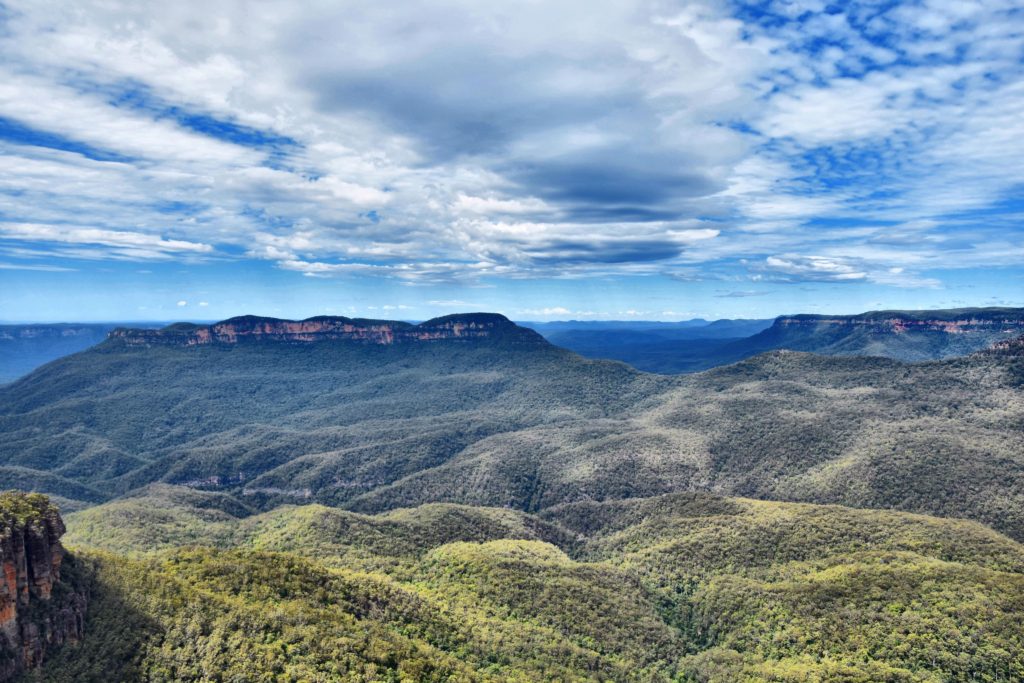
This was a very busy area with many tourists taking the rides up and down the valley, but it was pleasant and the walk along the wooden boardwalk on the valley floor was interesting to see the trees and the bush in this area. I was glad I had taken the time to do this trip as it was fairly relaxing after my exploits on the first day had somewhat tired me out, and when I got back to Sydney around 5PM, I just meandered my way around Circular Quay browsing the shops before meeting a friend from the QM2 for drink at the Opera Bar next to the Opera House, prior to taking the return tender back to Arcadia. As the sun went down I managed to get some lovely shots from the upper decks with the Harbour Bridge bathed in red light in celebration of the Chinese New Year of the Dog. I thought how lucky I was to be in this magnificent city on the other side of the world from home.
Monday 26th February 2018 – Brisbane, Australia
My one and only previous visit to Australia had started in Brisbane way back in 2002, as this is where one of my Mum’s brothers and his family has lived since emigrating permanently to Australia in 1995. I had not seen my Uncle Clive for over 10 years since he last visited England, so this was a great opportunity for both of us to meet up and spend some time together. Many people had told me that on world cruises people visit friends and family the most in Australian ports, and it is a very special time as some may not have seen these loved ones for many years and may not get the chance to do so again.
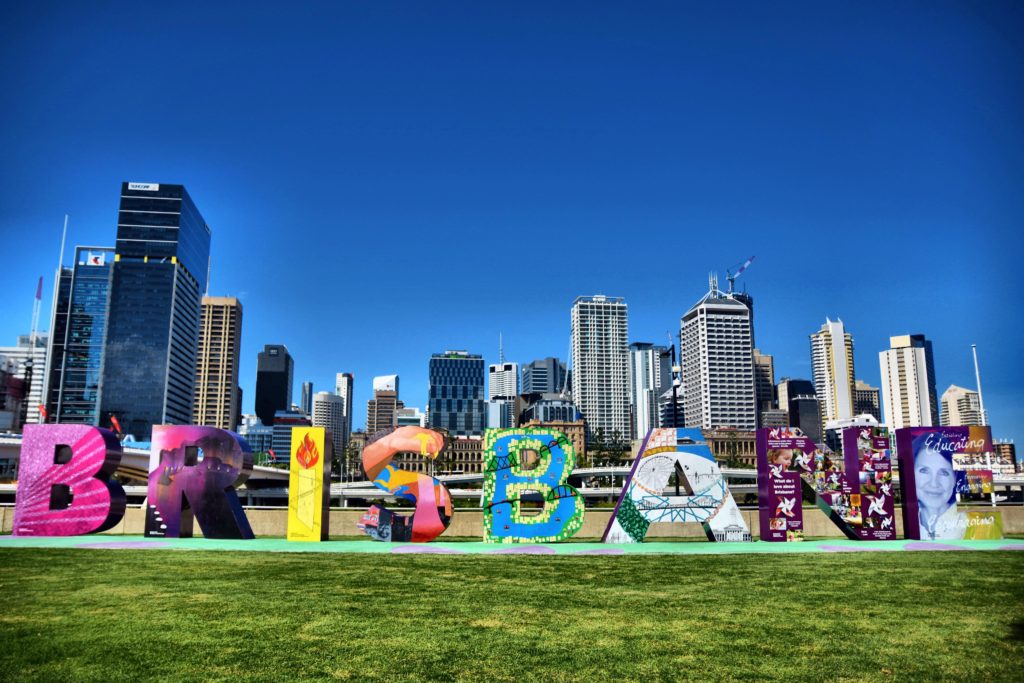
I took the opportunity with open arms and after a scheduled crew drill I met my uncle at lunchtime at Fisherman’s Island Multi User Terminal where Arcadia docked, around a 30-minute drive from central Brisbane. He picked Grace and I up and we drove off towards Mount Coo-tha, taking the time to catch up and share stories, whilst he gave us a little running commentary of what we were passing. Mount Coo-tha is not really a mountain as such, but more like a large hill. It stands 287 metres above sea level and is the highest peak in the city, therefore offering the best views of the skyline and the surrounding river valley.
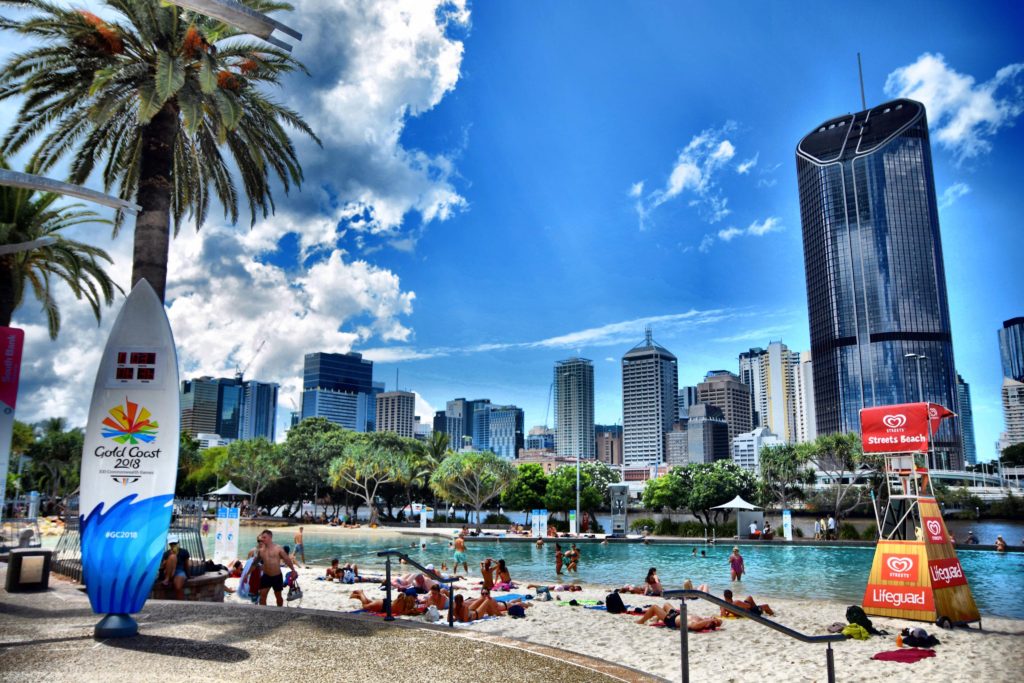
After a short photo stop we headed into the city to the South Bank Parklands, where the 1988 World Expo was held and what is now a leisure area comprising of restaurants and open space, including the Streets Beach man made lagoon. We had lunch at The Plough Inn, an authentic Aussie pub in a typical Queenslander property that my uncle highly recommended and which was very nice indeed. After this we walked through the South Bank area, taking pictures first of the Brisbane sign, installed for the 2010 G20 summit and now a permanent fixture along the river bank. We then had a look at the Nepal Peace Pagoda, which was constructed in Kathmandu in 1986 by 160 Nepalese families from 80 tonnes of indigenous timber from the Teral jungle forest. It is intricately carved with Buddhist symbols and is the only international exhibit remaining on the site.
We then followed the Brisbane River, walking through part of the Grand Arbour, a 1000 metre walkway comprised of 443 steel tendrils that have a bougainvillea canopy growing over them, bursting with purple in the summer sunshine. We made our way further down the river to cross the Goodwill Bridge, passing by the Queensland Maritime Museum and South Brisbane Dry Dock and heading into the City Botanic Gardens, the second oldest in Australia after the ones in Sydney, with these being founded in 1828.
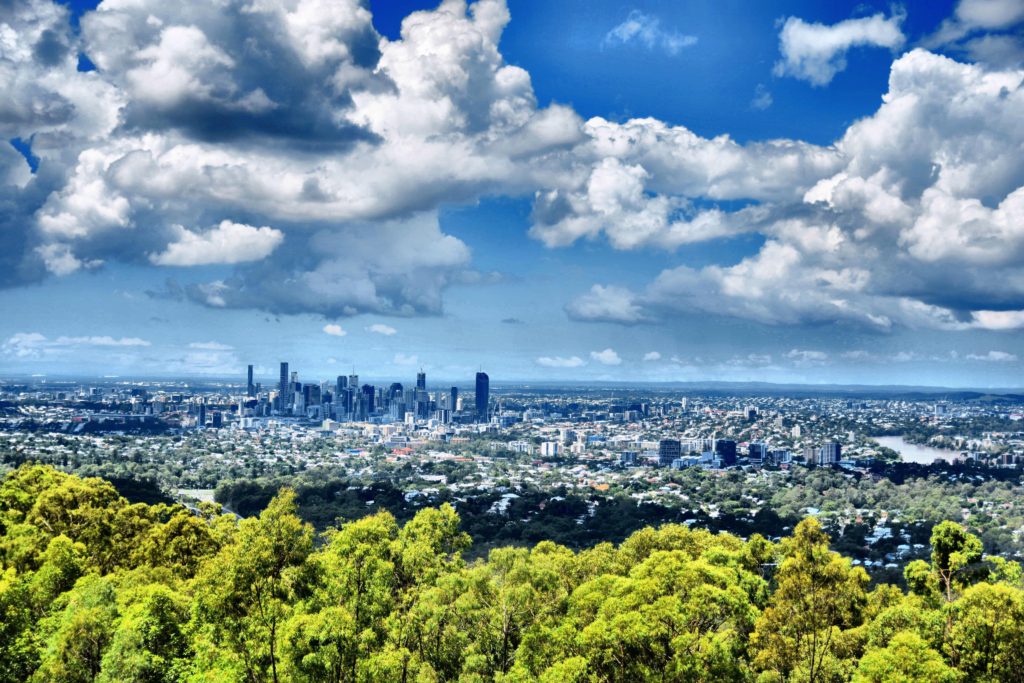
After walking through the garden and stumbling across a wild possum in the middle of the pathway, we headed to the city centre and Queen Street Mall (a stop for a fridge magnet high on the agenda), and then to view the Brisbane City Hall where we had a short stop at the Pig and Whistle Pub as it was extremely hot and humid and we had been walking for a quite a while. At this point, with the drive back to the ship a lengthy one, we departed for South Bank to pick up the car and drove back to the port, passing close by the famous Gabba Cricket Ground, the site of many Australian demolitions of the England in the Ashes down the years. It was a great day and made even more special for the fact that I got to see my Uncle Clive, with both of us saying we won’t leave it so long next time.
Wednesday 28th February 2018 – Airlie Beach, Australia
Airlie Beach the ‘gateway to the Whitsundays and the Great Barrier Reef,’ marked day 50 of our journey and therefore the halfway point of the world cruise. This was to be our last stop in Australia before heading up the coast of Queensland and then through the Torres Straits onward towards the Philippines. It turned out to be a challenging day weather wise, due to high swells which made tendering difficult.
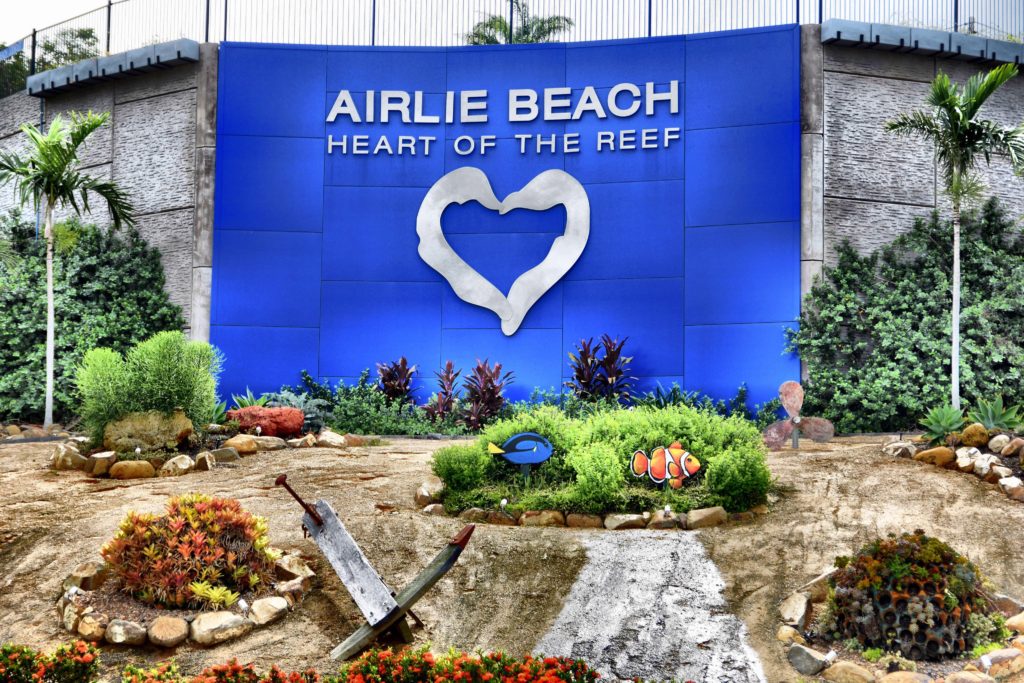
We managed to get all of our tours off, including those to the Great Barrier Reef, before I headed ashore to take a leisurely 2-hour catamaran trip passing by some of the Whitsundays. It was a pleasant cruise out on the Camira, a large bright purple sailing catamaran, although the weather was dull, but very humid all the same. We sailed under sails for most of our trip out and we had nice views of Arcadia at anchor with Airlie Beach in the background. After the cruise, there was enough time to take the Bicentennial Boardwalk into Airlie Beach itself, which was only 10 minutes walk from the Abell Point Marina where the tenders came in.
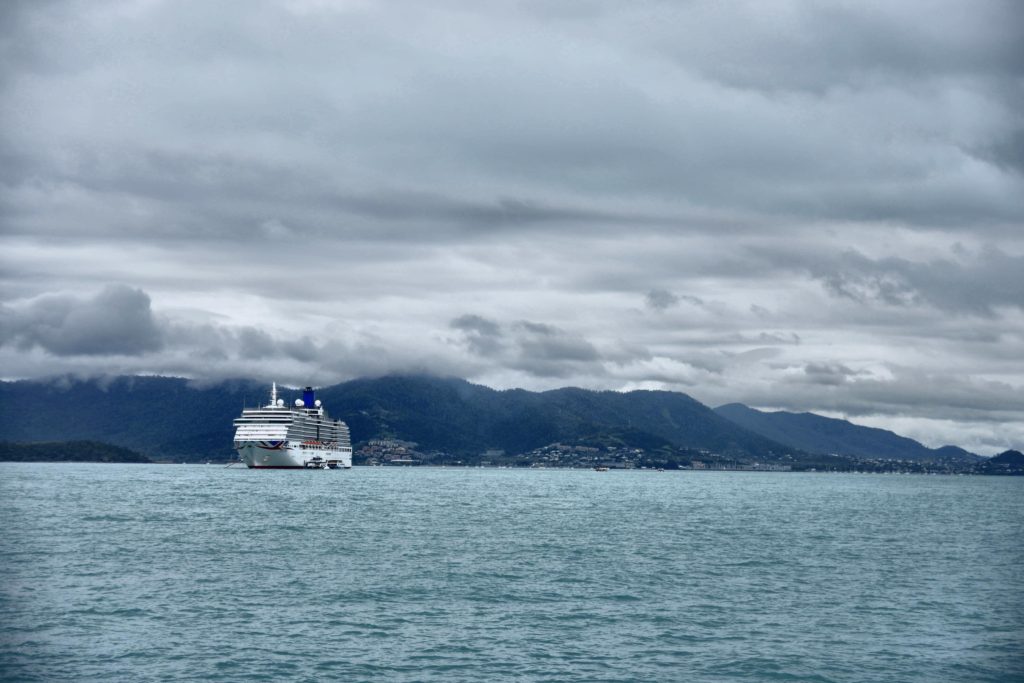
Airlie Beach is a backpacker’s haven, and so the main drag had lots of independent tour businesses offering various sailing experiences to the Whitsundays and the Great Barrier Reef, with some nice surfing shops and quite a few nice restaurants. One of which I visited for a quick bite to eat, before walking back to the tender point. It was quick visit and maybe if given the chance again, I will take the opportunity to go to the Great Barrier Reef, but this time I just wanted to have my feet on solid ground in Australia before the 6 sea days to Manila.
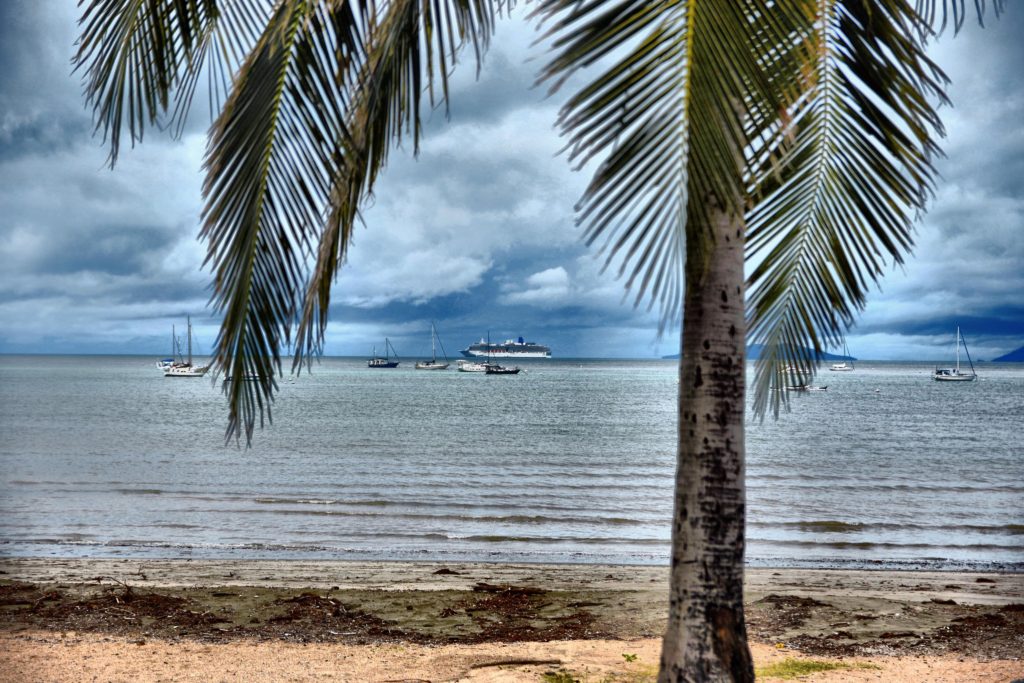
The Arcadia 2018 Western Circumnavigation has certainly lived up to my expectations thus far and I do have to take a moment most days to pinch myself that I have travelled to the other side of the world on a cruise ship, visiting far-flung destinations that I never dreamed I would get to see. It feels like it has flown by, with half of the journey still left and more new destinations to explore. The excitement factor is only getting greater and I hope that I can further share these amazing experiences with you in the not so distant future.
Sam will be sharing more from his world cruise diary over the coming weeks. To make sure you don’t miss his next instalment, subscribe for updates at the top of this page. You can find out more about world cruises here. If you missed the first part of Sam’s journey, you can read it here.
If you have the time, and you enjoy reading this blog, please consider nominating me for Best Cruise Blogger at this year’s Cruise International Awards. You can find a link to the nomination form here.
About Sam
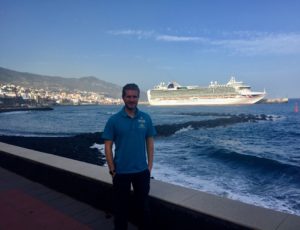 Sam Whiteside grew up by the seaside in Lowestoft, Suffolk but ended up working at sea by chance after a discussion at university with a professor. Having spent his entire ship career in the Shore Excursions department, Sam is currently a Port Presenter with P&O Cruises where he has been for 5 years. He has worked on all the ships in the current fleet.
Sam Whiteside grew up by the seaside in Lowestoft, Suffolk but ended up working at sea by chance after a discussion at university with a professor. Having spent his entire ship career in the Shore Excursions department, Sam is currently a Port Presenter with P&O Cruises where he has been for 5 years. He has worked on all the ships in the current fleet.
Sam loves getting out and exploring all the destinations that he visits on cruises and is always excited to try new things and expand his knowledge of the ports. He has recently invested in a new passion of amateur photography, which is great in his job because he has the perfect material to work with on a daily basis. Sam doesn’t have a favourite destination. He finds they all have something special about them, but destinations he enjoys visiting regularly include the Baltic and the Central Mediterranean.
You can follow Sam’s travels on Instagram at iamsailorsam.
Follow me on social media

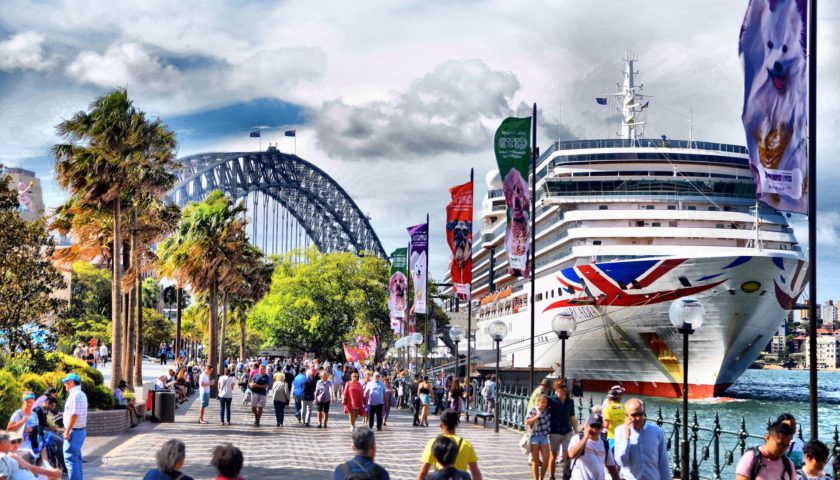
Thank you Anna for bringing Sam’s diary to us all. I hope you can earn some income for the effort you are investing. Yes, I voted for you!
Hello Ron. Many thanks for your kind comments and for voting for me. I am pleased to hear you are enjoying the blog. I’ll be posting more from Sam very soon.